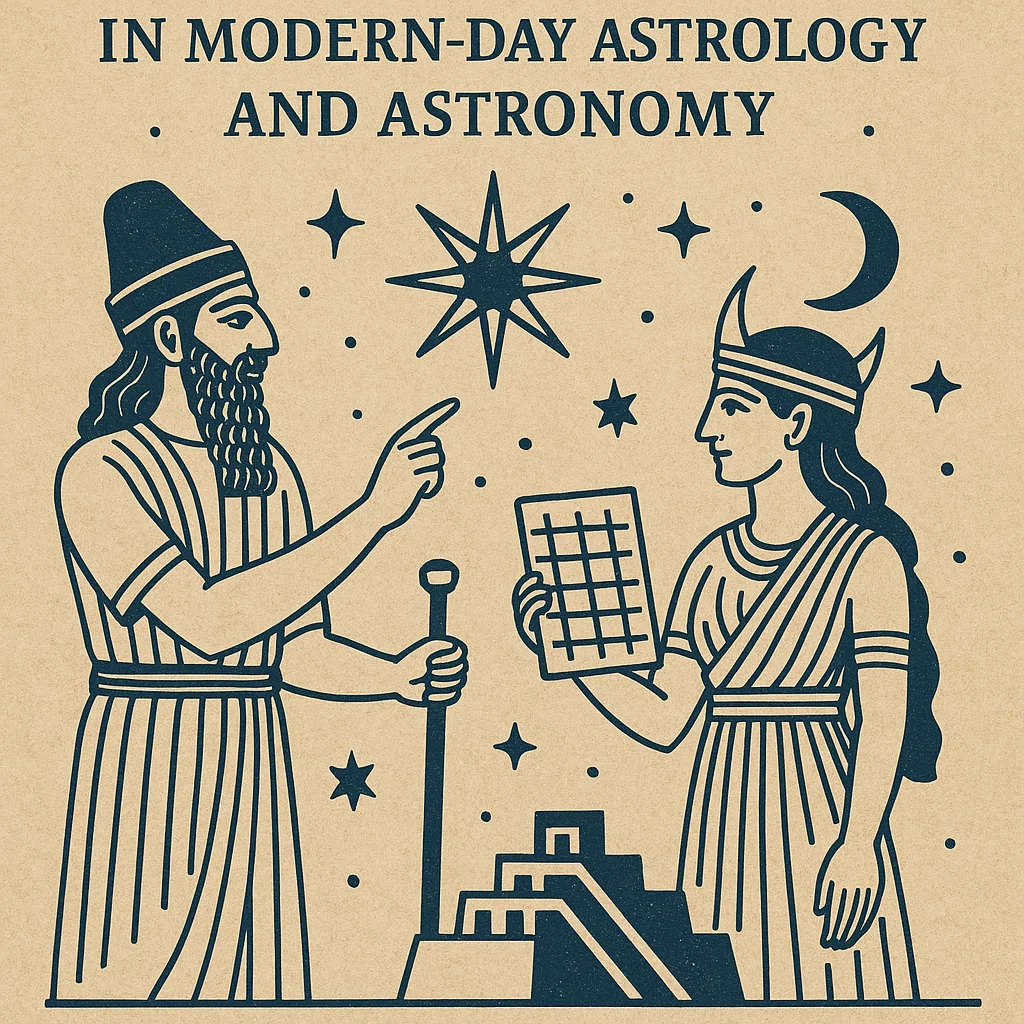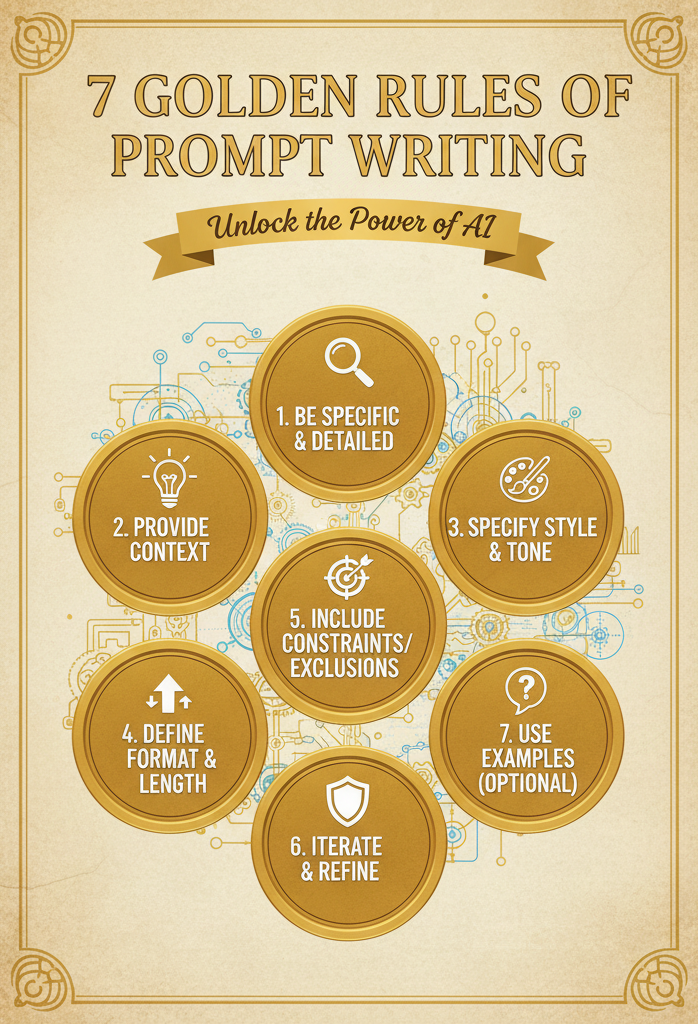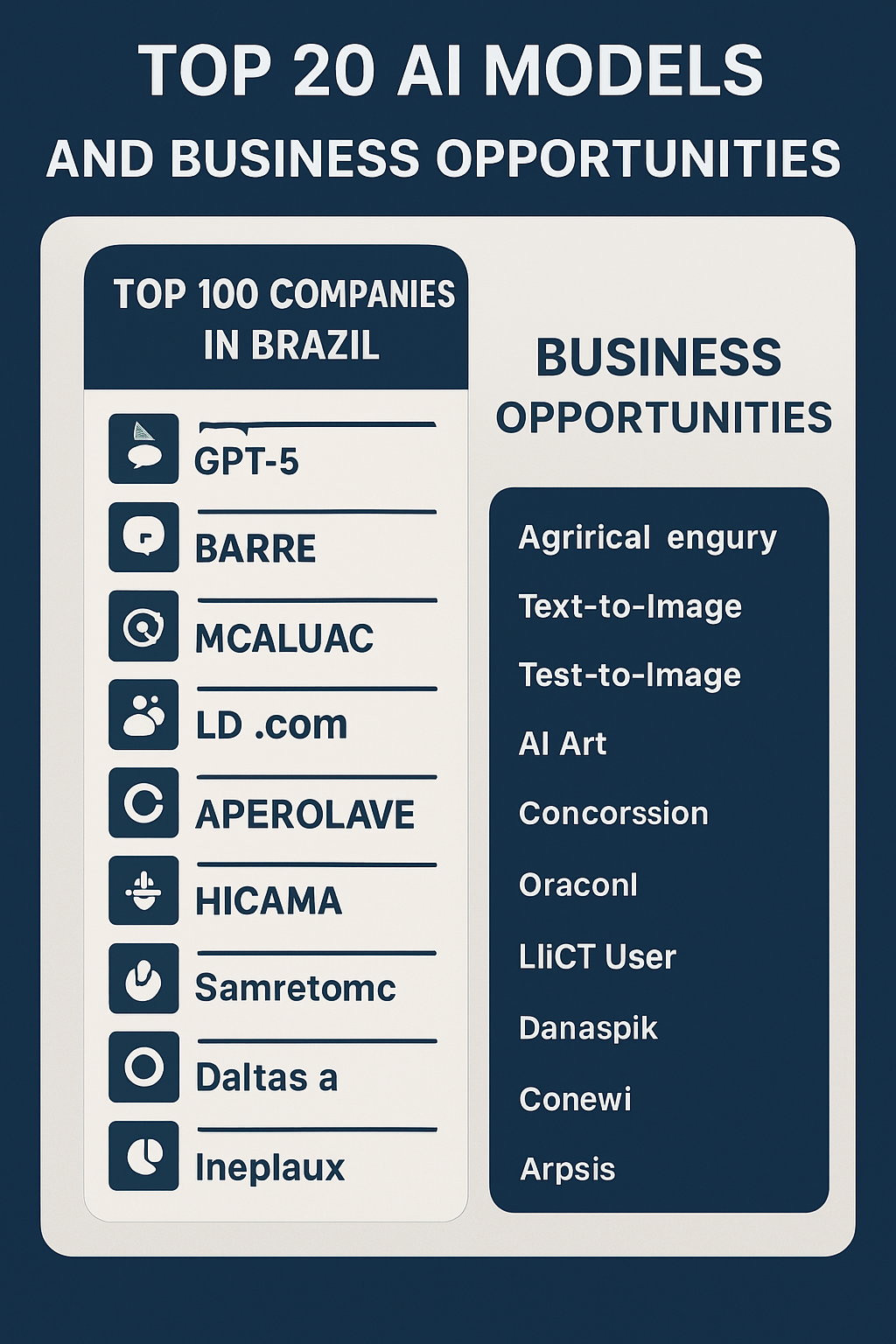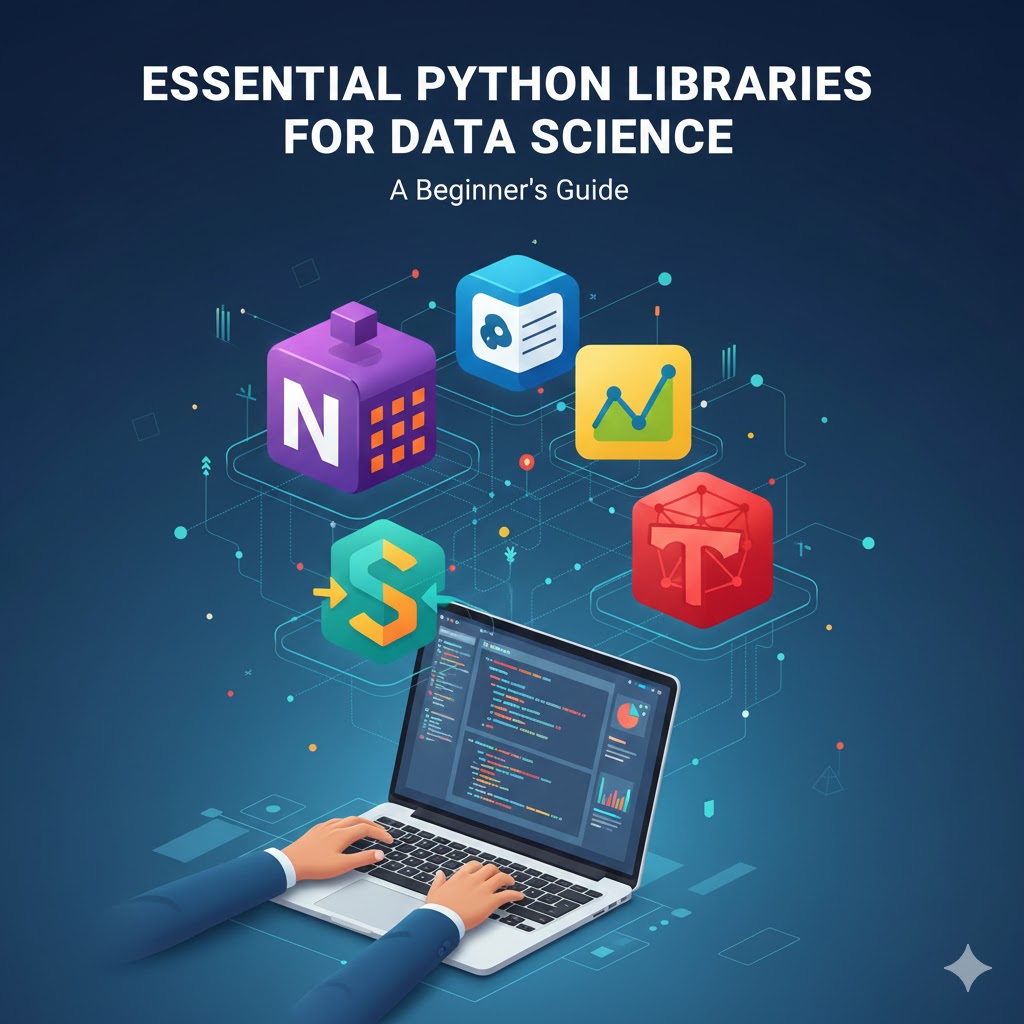Artificial Intelligence is no longer just a concept of the future—it is the driving force behind today’s technological revolution. From healthcare and education to e-commerce, finance, and entertainment, AI models are shaping industries, changing workflows, and enabling humans to work smarter and faster.
For students, AI models provide powerful tools for learning, research, and experimentation. They can be used to analyze data, generate insights, create visuals, and even automate study tasks. For developers, AI models accelerate innovation, cut down on development time, and allow them to build applications that would have been impossible just a few years ago.
In this guide, we will dive deep into the Top 20 AI Models that are making the biggest impact globally. For each model, you will learn:
- What it is and who developed it.
- Its main use cases across industries.
- The benefits of using it.
- How students and developers can apply it to improve productivity and innovation.
Top 20 AI Models
1. GPT-5 (Generative Pretrained Transformer 5)
- Developer: OpenAI
- Use Cases: Natural language understanding, text generation, coding assistance, tutoring, creative writing.
- Benefits: Provides highly accurate and context-aware responses; versatile in multiple domains.
- Productivity for Students: Can be used to summarize books, generate notes, or explain complex topics in simpler terms.
- Productivity for Developers: Accelerates coding, debugging, and prototyping.
2. BERT (Bidirectional Encoder Representations from Transformers)
- Developer: Google AI
- Use Cases: Search optimization, natural language understanding, sentiment analysis, chatbots.
- Benefits: Designed for better understanding of context in language, especially useful in search queries.
- Productivity for Students: Useful for academic search engines and text classification projects.
- Productivity for Developers: Helps build smarter search engines and NLP-driven apps.
3. DALL·E
- Developer: OpenAI
- Use Cases: Text-to-image generation for design, advertising, creative industries.
- Benefits: Turns written prompts into unique, realistic, or artistic visuals.
- Productivity for Students: Helps in creating visual presentations and illustrations without design skills.
- Productivity for Developers: Can be integrated into apps for creative content generation.
4. Stable Diffusion
- Developer: Stability AI
- Use Cases: Open-source image generation, game assets, animation, and media.
- Benefits: Free and customizable, making it popular for creative communities.
- Productivity for Students: Can create illustrations for projects and research papers.
- Productivity for Developers: Enables integration into custom apps for low-cost image generation.
5. Claude
- Developer: Anthropic
- Use Cases: Writing, summarization, safe and ethical AI conversations.
- Benefits: Focused on safety, transparency, and ethical AI responses.
- Productivity for Students: Provides summaries and study material while avoiding harmful content.
- Productivity for Developers: Can be deployed in applications requiring safe AI assistants.
6. LLaMA (Large Language Model Meta AI)
- Developer: Meta (Facebook)
- Use Cases: Research, academic projects, lightweight AI development.
- Benefits: Smaller in size than models like GPT, making it easier to run on personal hardware.
- Productivity for Students: Excellent for local fine-tuning and experimentation.
- Productivity for Developers: Useful for creating resource-efficient AI solutions.
7. PaLM (Pathways Language Model)
- Developer: Google Research
- Use Cases: Reasoning tasks, multilingual apps, coding assistants.
- Benefits: Can reason better than older models, supports multiple languages.
- Productivity for Students: Helps in cross-language learning and problem-solving.
- Productivity for Developers: Perfect for building multilingual chatbots and global applications.
8. Gemini
- Developer: Google DeepMind
- Use Cases: Multimodal AI—handles text, images, and code simultaneously.
- Benefits: More flexible and powerful compared to single-domain models.
- Productivity for Students: Ideal for research projects combining text and images.
- Productivity for Developers: Speeds up development of complex AI solutions involving multiple data types.
9. Whisper
- Developer: OpenAI
- Use Cases: Speech-to-text transcription, translation, accessibility.
- Benefits: High accuracy in multiple languages; useful in education and accessibility.
- Productivity for Students: Can transcribe lectures or podcasts into notes.
- Productivity for Developers: Build transcription tools or real-time captioning apps.
10. MidJourney
- Developer: Independent research lab
- Use Cases: Artistic image generation, branding, content creation.
- Benefits: Produces high-quality, creative visuals for artistic use.
- Productivity for Students: Helpful in creative arts, visual storytelling, and presentations.
- Productivity for Developers: Can be leveraged for digital marketing or media applications.
11. ChatGLM
- Developer: Tsinghua University, China
- Use Cases: Conversational AI in English and Chinese.
- Benefits: Optimized for bilingual tasks, especially useful in education.
- Productivity for Students: Helps language learners by practicing bilingual conversations.
- Productivity for Developers: Build chatbots for Asian markets or cross-language tools.
12. Mistral AI
- Developer: Mistral (European startup)
- Use Cases: Lightweight, open LLMs for startups.
- Benefits: Efficient, open-weight model ideal for research and smaller businesses.
- Productivity for Students: Great for learning how to train smaller models.
- Productivity for Developers: Lower-cost option for AI deployment at scale.
13. Bloom
- Developer: BigScience (collaborative project)
- Use Cases: Open-source multilingual NLP tasks.
- Benefits: Supports 40+ languages, making it one of the most inclusive AI models.
- Productivity for Students: Useful for projects in less-resourced languages.
- Productivity for Developers: Helps create inclusive AI products globally.
14. ERNIE (Enhanced Representation through Knowledge Integration)
- Developer: Baidu
- Use Cases: Chinese NLP, knowledge-based Q&A.
- Benefits: Integrates structured knowledge with language modeling.
- Productivity for Students: Assists in knowledge-intensive learning.
- Productivity for Developers: Suitable for creating expert systems and knowledge apps.
15. Grok
- Developer: xAI (Elon Musk’s AI company)
- Use Cases: Conversational AI with humor and creativity.
- Benefits: Real-time conversational engagement with a unique personality.
- Productivity for Students: Makes learning interactive and fun.
- Productivity for Developers: Can be integrated into social platforms for engagement.
16. DeepFace
- Developer: Meta (Facebook)
- Use Cases: Facial recognition, AR, security.
- Benefits: Very accurate in recognizing human faces.
- Productivity for Students: Useful in computer vision learning projects.
- Productivity for Developers: Build authentication or AR-based apps.
17. YOLO (You Only Look Once)
- Developer: Joseph Redmon et al.
- Use Cases: Real-time object detection in images and videos.
- Benefits: Fast and accurate detection system.
- Productivity for Students: Can be applied to robotics and security projects.
- Productivity for Developers: Perfect for self-driving cars, drones, and surveillance.
18. AlphaFold
- Developer: DeepMind
- Use Cases: Predicting protein structures for biology and medicine.
- Benefits: Breakthrough in drug discovery and biology research.
- Productivity for Students: Assists life sciences students in understanding proteins.
- Productivity for Developers: Enables biotech innovations and research apps.
19. AlphaZero
- Developer: DeepMind
- Use Cases: Game-playing AI, reinforcement learning, optimization.
- Benefits: Learns strategy without human input; applied in chess, Go, and other domains.
- Productivity for Students: Demonstrates AI learning concepts for academics.
- Productivity for Developers: Useful in logistics, planning, and optimization problems.
20. DeepSeek
- Developer: DeepSeek AI (China)
- Use Cases: Efficient training and cost-effective AI deployment.
- Benefits: Focused on reducing computational costs.
- Productivity for Students: Good for learning how to manage efficiency in training.
- Productivity for Developers: Enables startups to adopt AI without huge infrastructure costs.
Final Thoughts
These 20 models represent the foundation of modern AI applications. By understanding their strengths, students can accelerate their learning while developers can design smarter, faster, and more efficient systems. Mastering these models will prepare anyone for the future of AI-driven innovation.












